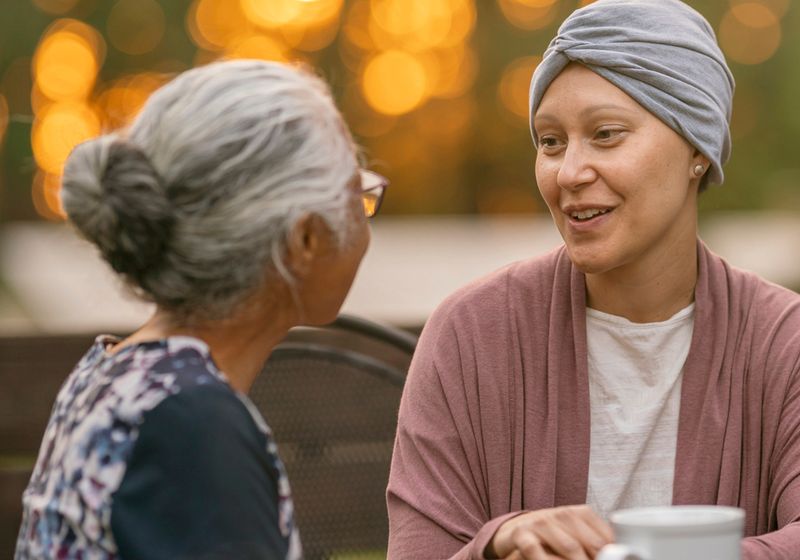Scientists traced how social interaction activates the neurons in the brain to reduce stress signaling and tumor growth, paving the way for brain-targeted treatments that could work in parallel with other cancer therapies.
In the 1970s and ‘80s, scientists began noticing that people who had few or poor social relationships had a higher risk of developing illnesses and all-cause mortality.1,2 A slew of follow-up studies suggested that social support could protect people from pathological conditions like arthritis, alcoholism, depression, and even death. This link holds true for cancer as well. Upon analyzing disease progression and survival rates in thousands of breast cancer patients, researchers observed a negative impact of social isolation and a positive impact of interpersonal connections on prognosis.3
One of the popular theories explaining these effects states that being social eases anxiety, a well-established driver of tumor growth, and consequently inhibits cancer progression. But how exactly does the body sense these stimuli and pump the brakes on cancer?
“The bridge between chatting with a friend and slowing tumor growth was a big gap in our understanding,” said Guang-Yan Wu, a neuroscientist at the Chongqing Key Laboratory of Brain Development and Cognitive Science, in an email. “So, we set out to be the detectives in the brain.”
In a recent study published in Neuron, Wu and his colleagues uncovered the neural circuitry that drives the therapeutic effects of social connections on cancer, in mice.4 “It demonstrates a real biological pathway by which this nebulous subject of social interaction can influence cancer,” said Jeremy Borniger, a cancer neuroscientist at the Cold Spring Harbor Laboratory. “That means that now it’s technically targetable, by drugs or by neuromodulation techniques, when before, we wouldn’t even know what to target or if there was something to target.”
Wu added that these findings establish a new paradigm for how psychosocial factors influence cancer via neural circuits and could potentially lead to therapies that complement existing treatments.
Various regions of the mammalian brain sense social behaviors. Key among them, in the context of calming anxiety, is the anterior cingulate cortex (ACC). Wu and his colleagues hypothesized that social interaction (SI)-activated ACC neurons could alleviate cancer-induced anxiety and slow down tumor growth.
To test their theory, the team first inoculated mice with breast cancer cells and either allowed them to have social interactions for varying times with other healthy mice or kept them alone in their cages. The mice that engaged with their mates had reduced anxiety and had tumors that weighed and grew less, compared to the isolated mice.
“We were most surprised by how robust the effect was—even short daily SI [of] one hour significantly reduced tumor growth and anxiety-like behaviors in mice,” Wu said.
One of the ways anxiety boosts cancer expansion is via the stress-associated peptides released by the sympathetic nervous system—the network of nerves that activates the “flight or fight” response. In 2013, scientists studying prostate cancer observed that destruction of sympathetic nerves prevented tumor growth.5 Considering this, Wu and his team investigated how SI affected the levels of the intratumor stress peptide norepinephrine, and they observed lower levels of it in the rodents that could interact with other mice.
To study if ACC neurons contributed to this effect, the scientists recorded the neurons’ activity in freely moving mice with mammary tumors. In the animals that engaged in SI, excitatory ACC neurons were more active in response to social behavior. When Wu and his team chemically inhibited these neurons, they noticed that the anxiety-reducing and anti-tumor benefits of SI vanished. However, reactivating the SI-responsive ACC neurons rescued these effects.
With the ends of the neural pathway figured out, Wu and his colleagues set out to discover the intermediate steps connecting ACC to the sympathetic nerves in the tumor microenvironment. The basolateral amygdala, a brain region critical for emotion and sociality, was a prime candidate. The team had previously shown that activating specific neurons in the central amygdala increased anxiety and tumor progression in mice.6 Upon recording the activity of ACC and amygdala neurons simultaneously, the team discovered a probable pathway: SI activates ACC excitatory neurons, which leads to enhanced activity in a subset of inhibitory amygdala neurons, which ultimately suppress the tumor growth-promoting central amygdala neurons.
Wu noted that similar neural circuits and stress responses exist in humans, suggesting that the findings are likely generalizable. However, for many individuals, social situations can be anxiety-inducing. “There are mouse models that you can develop to make [the animals] anxious with social interactions,” Borniger said. “That’s probably an important next step, to see if the same circuit is activated in an aversive social context.”
Wu and his colleagues are designing a proof-of-concept clinical trial to evaluate the efficacy of structured social support interventions as an adjuvant therapy in breast cancer patients. “This trial will rigorously assess whether targeted psychosocial support can modulate neural activity, improve antitumor immunity biomarkers, and ultimately enhance conventional treatment outcomes,” Wu said. They are also developing protocols for non-invasive neuromodulation techniques, such as transcranial magnetic stimulation (TMS), to precisely activate ACC pathways in patients.
As for Borniger, he would like to see how SI affects metastatic spread of tumors. If this circuitry controls cancer metastasis as well, then any treatments targeting this pathway would be more translatable, he added.

